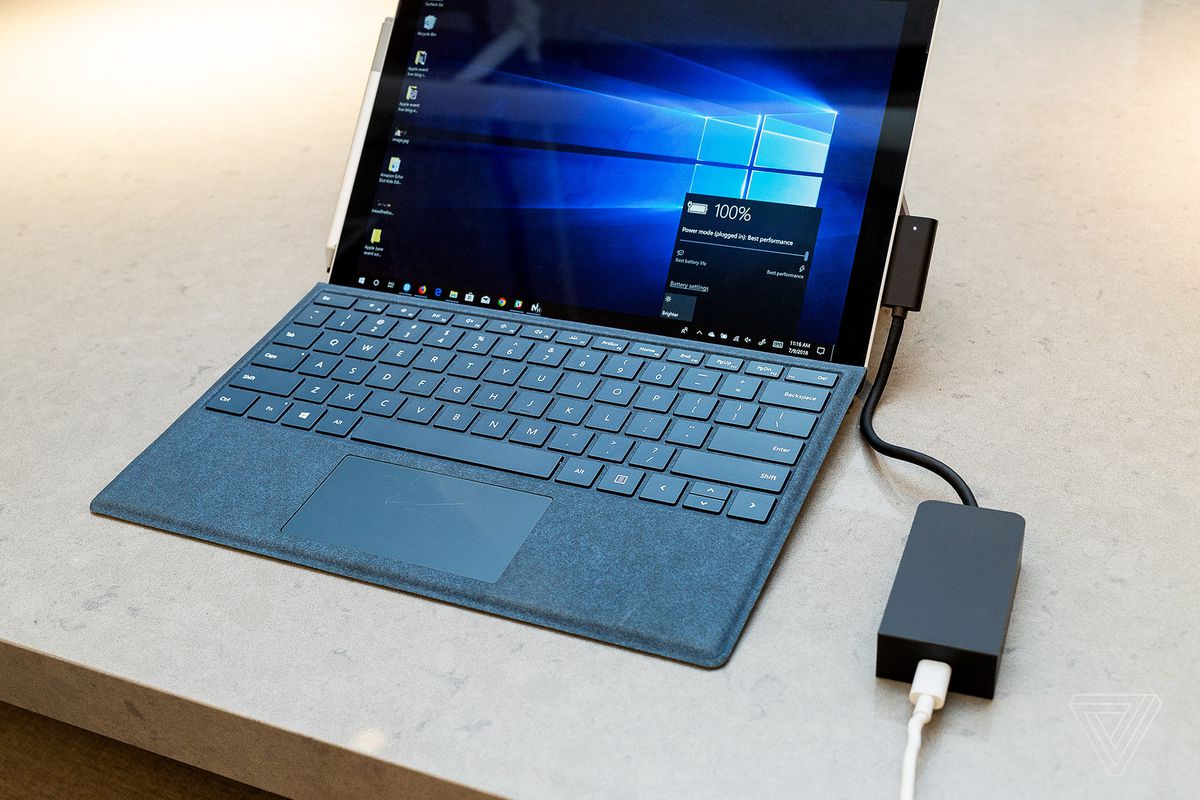Here are three ways Microsoft could have made a better Surface USB-C adapter
…

At long last, Microsoft has come up with a way for Surface Pro and Surface Laptop owners to use USB Type-C power adapters and peripherals with their devices. The Surface Connect to USB-C Adapter (official name) was finally made available for purchase a couple of weeks ago, after more than a year of promises from Microsoft that it was working on such an adapter.
The $79.99 adapter, which is officially for “enterprise and education customers,” but can be purchased by anyone, does indeed provide a way to charge a Surface device with a USB-C charger, or plug in a USB-C device or hub through the Surface’s proprietary Connect port. You can even plug in an external display, provided you have the right USB-C dock on hand. It, in effect, does work as advertised. It just works in the clumsiest way possible.
Essentially, the adapter converts the proprietary Surface Connect port found on the side of every portable Surface device into a USB-C 3.1 port. That allows it to support power delivery (for charging), video output, and data in and out at USB 3 speeds. It doesn’t have Thunderbolt 3’s faster data throughput, but it’s still competent enough to use it with one of the popular USB-C docks that are readily available for MacBooks and other computers that only have USB-C ports. Currently, I’m using it with such a dock to connect to an external monitor, Ethernet, and charge this Surface Pro with just one cable, instead of having to deal with Microsoft’s full-size Surface Dock. You can also use it to charge your Surface on the go with a USB-C battery pack (provided it supplies the minimum 27W of power Microsoft says is necessary).

Functionally, the adapter is fine, but its design is where things start to fall apart. The Surface Connect to USB-C Adapter has a two-piece design that uses a six-inch cable to join the Surface Connector to a three-inch breakout box with a single USB-C port. It’s a big, clumsy adapter that is annoying to use and annoying to pack when traveling.
So, here are three ways Microsoft could have made this better and maybe justified the ridiculous cost of it.
- Make a cable that has a Surface Connect port on one end and a USB-C cable on the other. This is basically what Apple does with the Lightning to USB-C cable for the iPhone and iPad, and would make it easy to use the same USB-C charger as your phone to power your Surface. You could even use a multi-port charger like this one that has USB-C and USB-A ports to charge all of your devices at the same time when traveling. The one possible downside to this design is that it could make it easy to knock the cable out of the Surface Connector on the side of the computer, as it uses a magnetic attachment. (The current design moves the stress to the breakout box, so the Connector doesn’t get knocked out.) But in my experience, it takes a bit of intentional force to disconnect the Surface Connector, so it’s hard to see this being a real issue.
- Make an adapter that plugs into the Surface port and has a USB-C port on the other side. An alternative to a full cable approach would be to just have an adapter that plugs into the side of the Surface that lets you then plug a USB-C cable into it, not unlike the USB-A to C adapters that come with many smartphones. This would easily let you plug in a USB-C dock with more USB-A ports, video out, Ethernet, and power into the side of the Surface.
- Put more than one port on the existing USB-C adapter. This one is so stupidly obvious that it’s almost insulting. Have you seen the size of the breakout box on the existing USB-C adapter? It’s huge! It could easily support more USB-C or A ports. Or maybe even an HDMI port or Ethernet jack, eliminating the need for a separate USB-C dock to provide those. It’s almost the size of the Satechi dock that offers three USB-A ports, USB-C power pass through, HDMI, Ethernet, and both full-size SD and microSD slots for the same $79.99 price. But alas, we’re stuck with a single USB-C port inside a brick that’s the size of a wall wart.

And then the most obvious fix for this would be for Microsoft to have put a USB-C port on the Surface Pro and Surface Laptop itself, which obviates the need for all of this. But until that happens, we’re stuck paying $79.99 and dealing with this giant adapter for the convenience of traveling with one charger for our phone and computer or using a USB-C based hub at our desks.
Vox Media has affiliate partnerships. These do not influence editorial content, though Vox Media may earn commissions for products purchased via affiliate links. For more information, see our ethics policy.